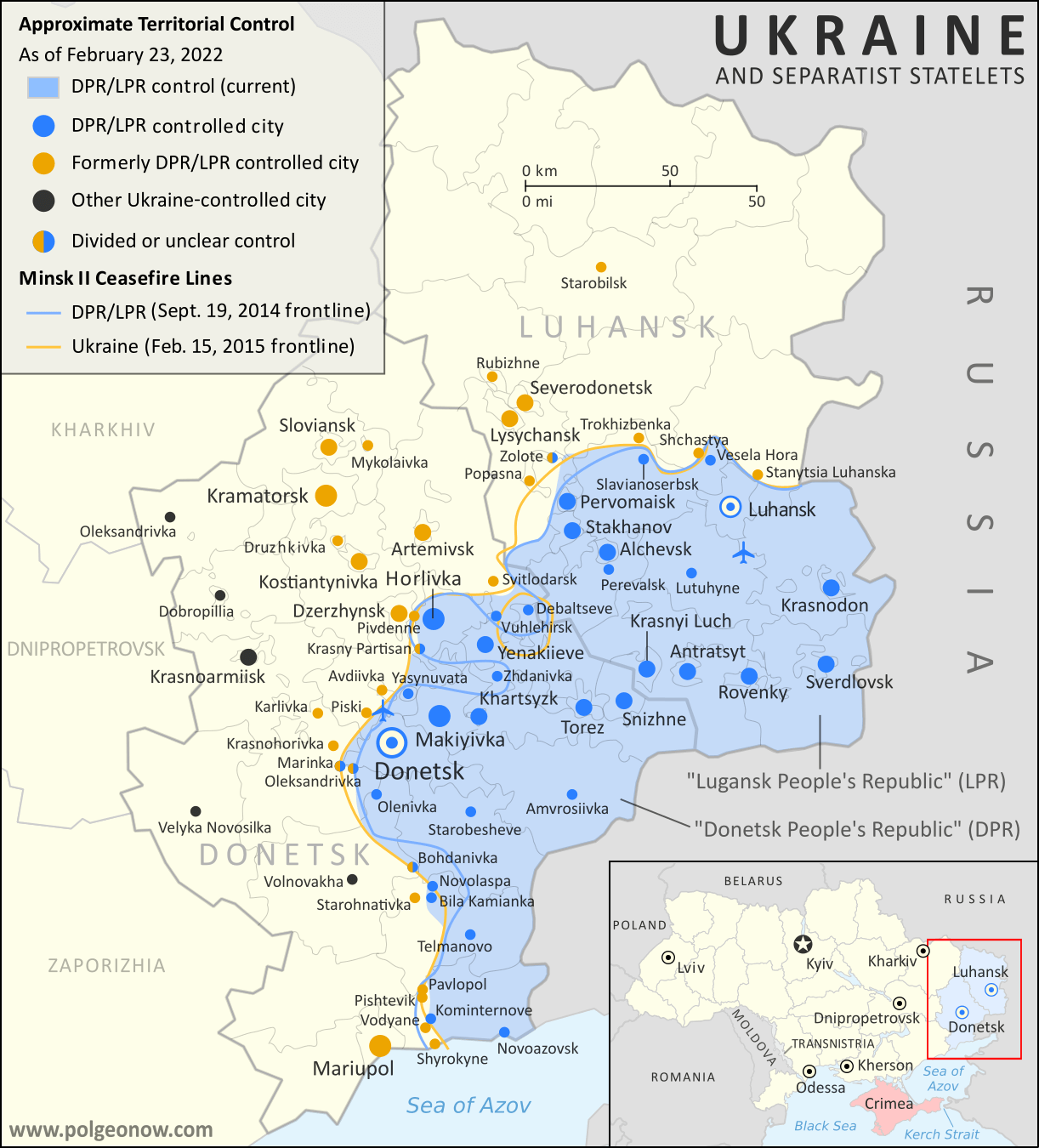 There are newer editions of this map available. To see them, view all Israel articles or Palestine articles on PolGeoNow.
There are newer editions of this map available. To see them, view all Israel articles or Palestine articles on PolGeoNow.
This map shows the approximate situation on December 8, a week after Israel and Hamas resumed fighting in the Gaza Strip after a seven-day "humanitarian pause".
Timeline by Djordje Djukic, with additional reporting by Evan Centanni
Gaza Strip Divided
Just as we were publishing the previous edition of our Israel/Palestine control map, Israel began its long-expected counter-invasion into the Palestinian territory of the Gaza Strip, responding to hardline Palestinian group Hamas's unprecedented October 7 invasion of Israel. Now, one month into Israel's counter-invasion and two months into the war, the densely-populated Gaza Strip is divided between Hamas-led forces and the Israeli military.
Israeli forces have seized large parts of Gaza City, the biggest population center in the densely-populated Strip, and completely surrounded the parts of it and nearby towns that are still under Hamas control. Meanwhile, since the temporary humanitarian ceasefire between Hamas and Israel ended a week ago, Israel has also pushed deep into the southern Gaza Strip city of Khan Yunis. For more information on control within the Gaza Strip, maps by online conflict-tracker Suriyak and ISW/Critical Threats give good detailed approximations.
Since our last report, Israel's military has appeared to confirm that it's killed at least about 5,000 Palestinian fighters and 10,000 Palestinian civilians, about ten times the respective numbers of Israeli soldiers and civilians killed by Hamas and allies in their brutal October 7 rampage through the Israeli countryside. This is roughly in line with estimates from the Hamas-affiliated Gaza Health Ministry, which as of Friday estimated a total of 17,000 Palestinians killed, about a third of them adult men (who are assumed to make up the vast majority of Hamas fighters).





 There are newer editions of this map available. To see them, view all
There are newer editions of this map available. To see them, view all 







